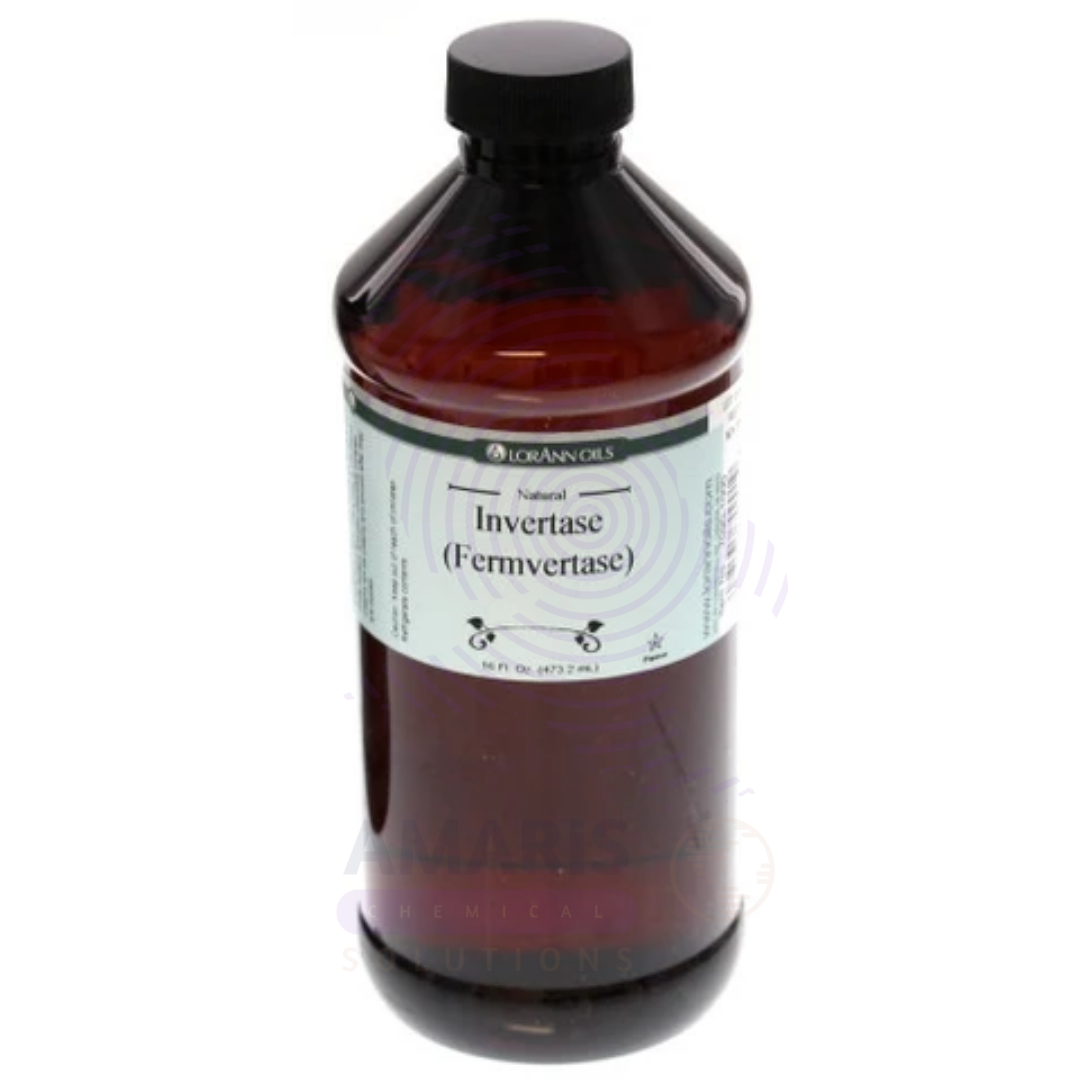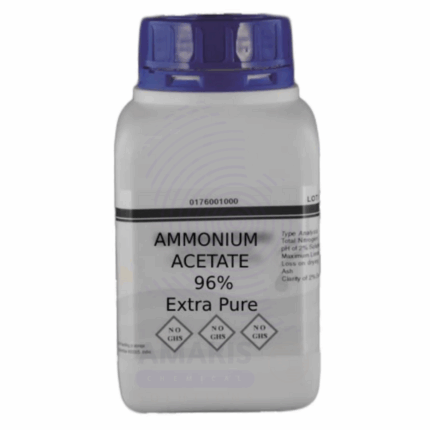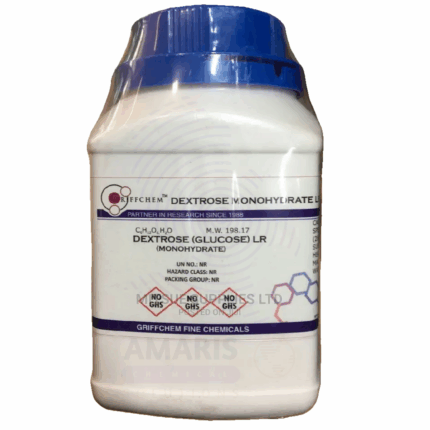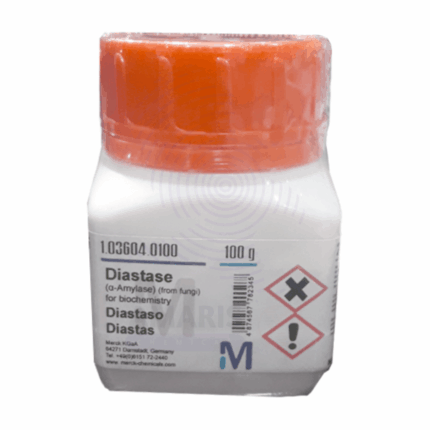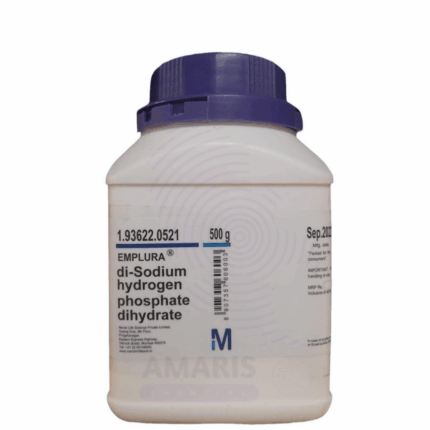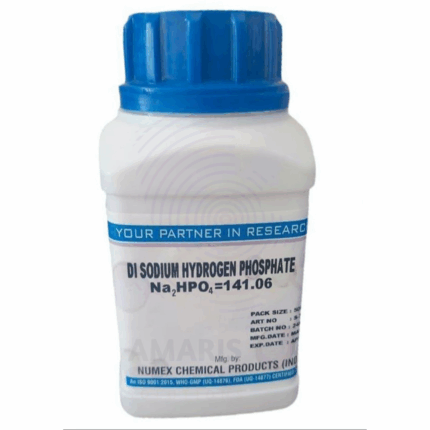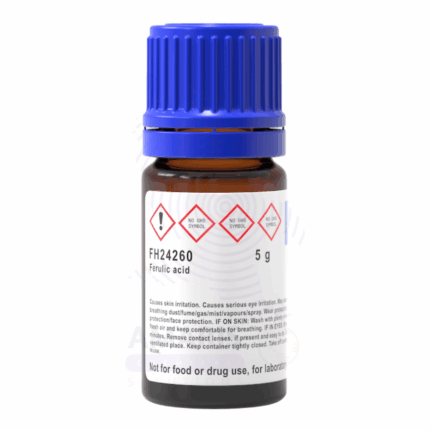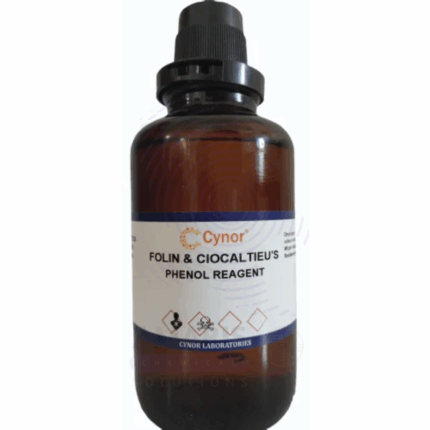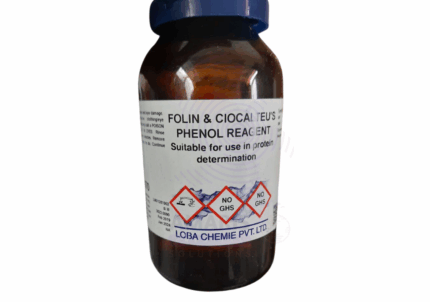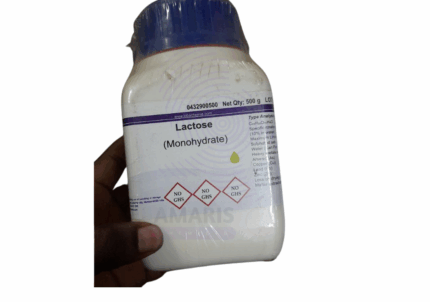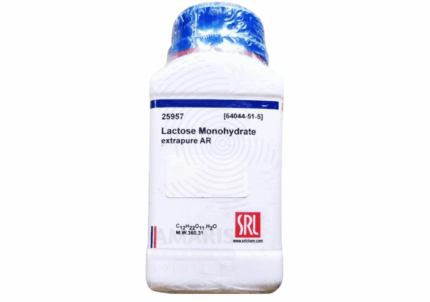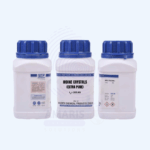

Invertase Extra Pure
$ 18.00 Original price was: $ 18.00.$ 17.86Current price is: $ 17.86.
Invertase Extra Pure is a high-grade enzyme preparation that catalyzes the hydrolysis of sucrose into glucose and fructose. Valued for its exceptional purity and enzymatic activity, it is extensively used in biochemical research, food analysis, and industrial applications where accurate sugar conversion is critical. This enzyme plays a crucial role in fermentation processes, enzymatic assays, and carbohydrate studies. Its stability and efficiency make it a preferred choice in laboratories requiring consistent, reproducible results. For best performance, it should be stored in a cool, dry place and handled with care to preserve its enzymatic integrity.
Invertase Extra Pure
Primary Uses
- Enzymatic Hydrolysis of Sucrose:
Invertase catalyzes the breakdown of sucrose into glucose and fructose, making it essential in carbohydrate metabolism studies, enzyme kinetics, and biochemistry experiments. - Fermentation and Microbial Research:
Commonly used to support yeast fermentation studies and to analyze sugar utilization pathways in microbes. - Food Chemistry and Sugar Analysis:
Utilized in quantifying invert sugar content and evaluating sugar transformation during storage or processing.
Secondary Uses
- Educational Demonstrations of Enzyme Activity:
Serves as a reliable model enzyme in biotechnology or biology labs to teach about enzyme specificity, pH dependence, and temperature effects. - Substrate for Biosensor Development:
Studied in biosensors where invertase is immobilized to detect sugars or other analytes through enzymatic action. - Pharmaceutical and Nutraceutical Research:
Investigated for its role in formulating sugar-modified compounds or studying enzyme-stabilizing excipients.
| PACK SIZE |
100ml |
|---|
1. Basic Identification Attributes
- Product Name: Invertase
- Grade: Extra Pure (Laboratory/Analytical Grade)
- Also Known As: β-fructofuranosidase
- Enzyme Commission Number (EC): 3.2.1.26
- CAS Number: 9001-57-4
- Appearance: Off-white to beige powder
- Odor: Faint characteristic enzyme odor
- Source: Typically derived from Saccharomyces cerevisiae (yeast) or fungi
2. Physical & Chemical Properties
- Activity Range: Typically 100–300 U/mg (may vary by supplier)
- Solubility: Soluble in water, forms clear or slightly turbid solutions
- Optimal pH: 4.5–5.5
- Optimal Temperature: 50–60°C
- Stability: Sensitive to heat above 60°C and extreme pH; stable when stored dry and cold
3. Safety & Hazard Attributes
- GHS Classification: Not classified as hazardous
- Hazard Statements: None known for Extra Pure grade
- PPE Requirements:
- Dust mask or respirator (if handling large amounts)
- Gloves
- Safety goggles
- Lab coat
- First Aid Measures:
- Inhalation: Remove to fresh air; seek help if irritation occurs
- Skin Contact: Wash with water
- Eye Contact: Rinse thoroughly with water
- Ingestion: Rinse mouth; not considered hazardous in lab-grade amounts
4. Storage & Handling Attributes
- Storage Conditions:
- Store at 2–8°C in a dry, airtight container
- Avoid moisture, heat, and direct sunlight
- May be kept frozen for long-term storage
- Handling Notes:
- Use clean, dry instruments
- Reconstitute only when needed
- Avoid aerosol formation
5. Regulatory & Compliance Attributes
- Labeling Requirements: Non-hazardous; handle as a protein/enzyme
- Shelf Life: Up to 1–2 years when properly stored
6. Laboratory Applications
- Primary Uses:
- Hydrolysis of sucrose into glucose and fructose (inversion)
- Biochemical assays for carbohydrate analysis
- Food chemistry and sugar profile studies
- Enzymology teaching and demonstration
- Secondary Uses:
- Industrial enzyme research (e.g., in confectionery and syrups)
- Fermentation efficiency studies
- Biofuel research involving sugar breakdown
SAFETY PRECAUTIONS
Personal Protective Equipment (PPE):
- Wear a lab coat, nitrile gloves, and safety goggles.
- Use a dust mask or fume hood when handling powder to avoid inhalation of enzyme particles.
Handling:
- Avoid breathing dust or aerosols.
- Prevent contact with skin and eyes.
- Handle with care to prevent generating dust.
- Wash hands thoroughly after handling.
Storage:
- Store in a cool, dry, and well-ventilated area.
- Keep the container tightly closed.
- Protect from moisture and heat.
- Avoid contamination with other chemicals.
FIRST AID MEASURES
Inhalation:
- Move to fresh air immediately.
- Seek medical attention if respiratory irritation or allergic reaction occurs.
Skin Contact:
- Wash with soap and water.
- Remove contaminated clothing.
- Seek medical advice if irritation or allergic symptoms appear.
Eye Contact:
- Rinse thoroughly with water for several minutes.
- Remove contact lenses if present and easy to do.
- Seek medical attention if irritation persists.
Ingestion:
- Rinse mouth with water.
- Do not induce vomiting.
- Seek medical attention if discomfort or symptoms develop.
FIRE FIGHTING MEASURES
Flammability:
- Not classified as flammable, but organic dust may present a combustible dust hazard.
Extinguishing Media:
- Use water spray, CO₂, dry chemical, or foam.
- Avoid high-pressure water jet that may spread dust.
Hazardous Combustion Products:
- May emit carbon oxides and nitrogen oxides if involved in fire.
Firefighter Protection:
- Wear self-contained breathing apparatus (SCBA) and full protective clothing.
- Avoid inhalation of combustion fumes.


 Preservatives(food)
Preservatives(food) Flavor Enhancers
Flavor Enhancers Acidulants
Acidulants Sweeteners
Sweeteners Antioxidants
Antioxidants Colorants(food)
Colorants(food) Nutraceutical Ingredients (food)
Nutraceutical Ingredients (food) Nutrient Supplements
Nutrient Supplements Emulsifiers
Emulsifiers
 Collectors
Collectors Dust Suppressants
Dust Suppressants Explosives and Blasting Agents
Explosives and Blasting Agents Flocculants and Coagulants
Flocculants and Coagulants Frothers
Frothers Leaching Agents
Leaching Agents pH Modifiers
pH Modifiers Precious Metal Extraction Agents
Precious Metal Extraction Agents
 Antioxidants(plastic)
Antioxidants(plastic) Colorants (Pigments, Dyes)
Colorants (Pigments, Dyes) Fillers and Reinforcements
Fillers and Reinforcements Flame Retardants
Flame Retardants Monomers
Monomers Plasticizers
Plasticizers Polymerization Initiators
Polymerization Initiators Stabilizers (UV, Heat)
Stabilizers (UV, Heat)
 Antifoaming Agents
Antifoaming Agents Chelating Agents
Chelating Agents Coagulants and Flocculants
Coagulants and Flocculants Corrosion Inhibitors
Corrosion Inhibitors Disinfectants and Biocides
Disinfectants and Biocides Oxidizing Agents
Oxidizing Agents pH Adjusters
pH Adjusters Scale Inhibitors( water)
Scale Inhibitors( water)
 Antioxidants(cosmetic)
Antioxidants(cosmetic) Emollients
Emollients Fragrances and Essential Oils
Fragrances and Essential Oils Humectants
Humectants Preservatives
Preservatives Surfactants(cosmetic)
Surfactants(cosmetic) Thickeners
Thickeners UV Filters
UV Filters
 Fertilizers
Fertilizers Soil Conditioners
Soil Conditioners Plant Growth Regulators
Plant Growth Regulators Animal Feed Additives
Animal Feed Additives Biostimulants
Biostimulants Pesticides (Herbicides, Insecticides, Fungicides)
Pesticides (Herbicides, Insecticides, Fungicides)
 Active Pharmaceutical Ingredients (APIs)
Active Pharmaceutical Ingredients (APIs) Excipients
Excipients Solvents(pharmaceutical)
Solvents(pharmaceutical) Antibiotics
Antibiotics Antiseptics and Disinfectants
Antiseptics and Disinfectants Vaccine Adjuvants
Vaccine Adjuvants Nutraceutical Ingredients (pharmaceutical)
Nutraceutical Ingredients (pharmaceutical) Analgesics & Antipyretics
Analgesics & Antipyretics
 Analytical Reagents
Analytical Reagents Solvents(lab)
Solvents(lab) Chromatography Chemicals
Chromatography Chemicals Spectroscopy Reagents
Spectroscopy Reagents microbiology-and-cell-culture-reagents
microbiology-and-cell-culture-reagents Molecular Biology Reagents
Molecular Biology Reagents Biochemical Reagents
Biochemical Reagents Inorganic and Organic Standards
Inorganic and Organic Standards Laboratory Safety Chemicals
Laboratory Safety Chemicals Specialty Laboratory Chemicals(Special Laboratory Equipment)
Specialty Laboratory Chemicals(Special Laboratory Equipment)
 Demulsifiers
Demulsifiers Hydraulic Fracturing Fluids
Hydraulic Fracturing Fluids Scale Inhibitors(oil)
Scale Inhibitors(oil) Surfactants(oil)
Surfactants(oil) Drilling Fluids
Drilling Fluids
 Dyes and Pigments
Dyes and Pigments Bleaching Agents
Bleaching Agents Softening Agents
Softening Agents Finishing Agents
Finishing Agents Antistatic Agents
Antistatic Agents
 Admixtures
Admixtures Waterproofing Agents
Waterproofing Agents Sealants and Adhesives
Sealants and Adhesives Curing Compounds
Curing Compounds Concrete Repair Chemicals
Concrete Repair Chemicals Anti-Corrosion Coatings
Anti-Corrosion Coatings
 Surfactants(cleaning)
Surfactants(cleaning) Builders
Builders Enzymes
Enzymes Solvents (Cleaning)
Solvents (Cleaning) Fragrances
Fragrances
 Electronic Chemicals
Electronic Chemicals Catalysts
Catalysts Lubricants
Lubricants Photographic Chemicals
Photographic Chemicals Refrigerants
Refrigerants Automotive chemicals
Automotive chemicals Pyrotechnic Chemicals
Pyrotechnic Chemicals
 Biodegradable Surfactants
Biodegradable Surfactants Bio-based Solvents
Bio-based Solvents Renewable Polymers
Renewable Polymers Carbon Capture Chemicals
Carbon Capture Chemicals Wastewater Treatment Chemicals
Wastewater Treatment Chemicals
 Pigments
Pigments Solvents(paint)
Solvents(paint) Specialty Coatings
Specialty Coatings Binders/Resins
Binders/Resins Additives
Additives Driers
Driers Anti-Corrosion Agents
Anti-Corrosion Agents Functional Coatings
Functional Coatings Application-Specific Coatings
Application-Specific Coatings
 Fresh Herbs
Fresh Herbs Ground Spices
Ground Spices Whole Spices
Whole Spices Spice Blends
Spice Blends Dried Herbs
Dried Herbs
 Leavening Agents
Leavening Agents Dough Conditioners
Dough Conditioners Flour Treatments
Flour Treatments Fat Replacers
Fat Replacers Decoratives
Decoratives Preservatives(baking)
Preservatives(baking)
 Plasticizers & Softeners
Plasticizers & Softeners Reinforcing Agents
Reinforcing Agents Adhesion Promoters
Adhesion Promoters Vulcanizing Agents
Vulcanizing Agents Antidegradants
Antidegradants Blowing Agents
Blowing Agents Fillers & Extenders
Fillers & Extenders Accelerators & Retarders
Accelerators & Retarders